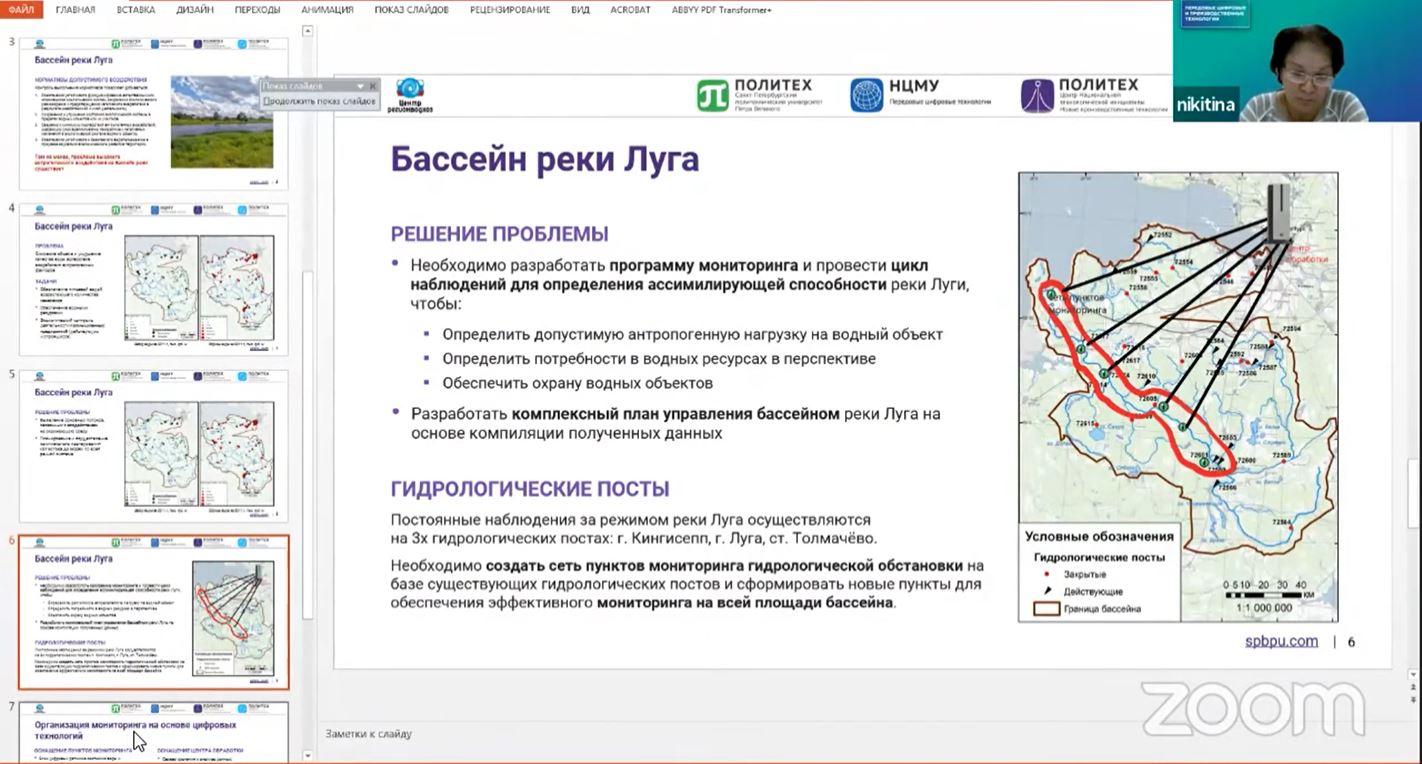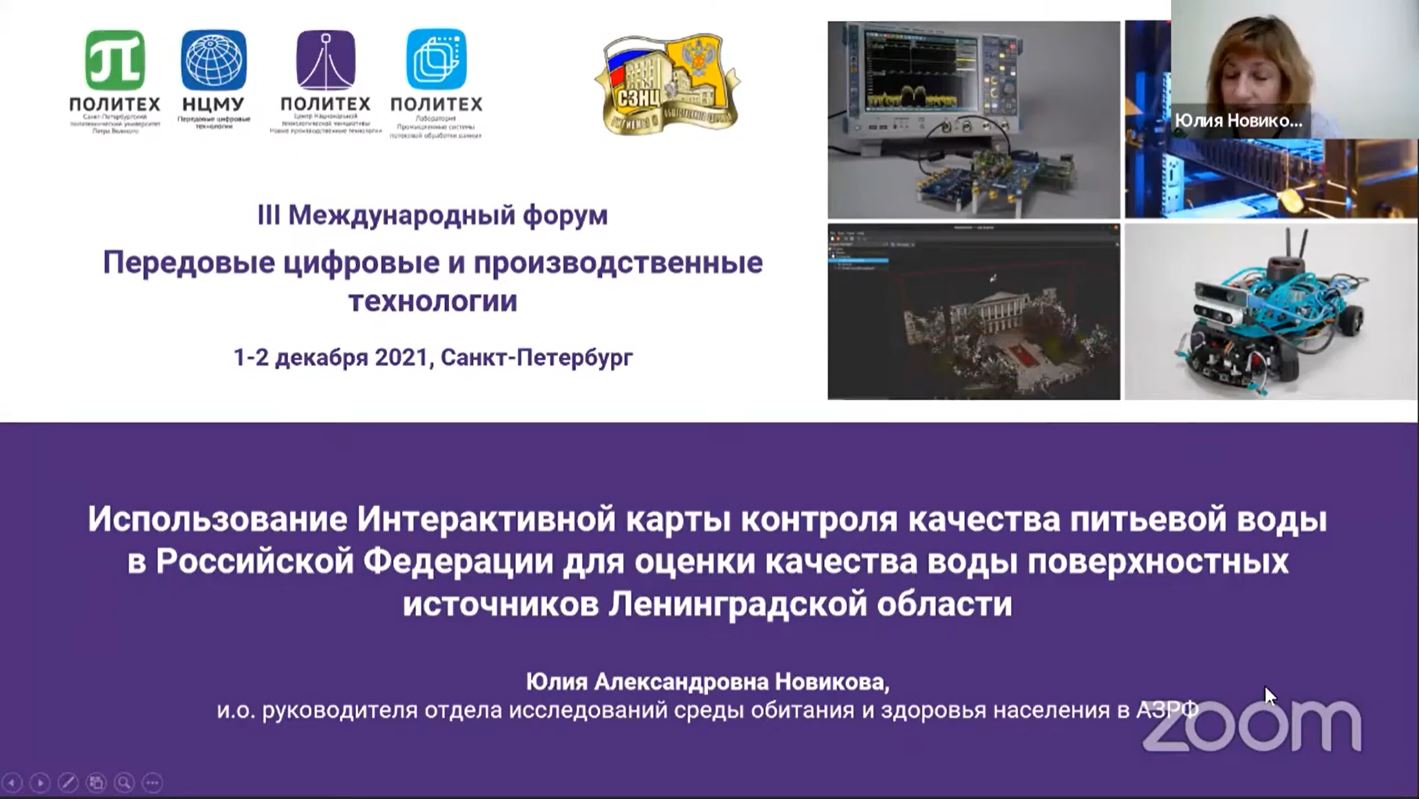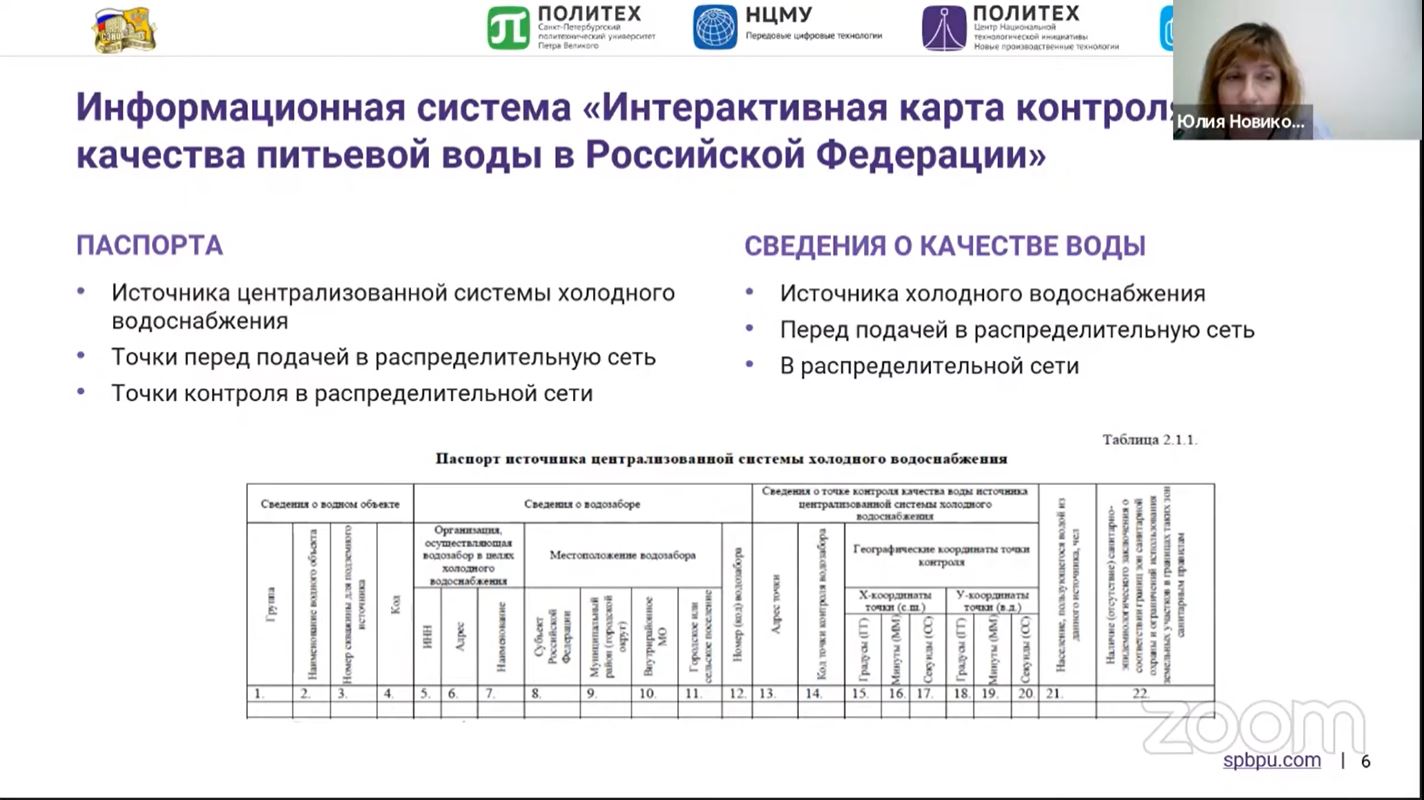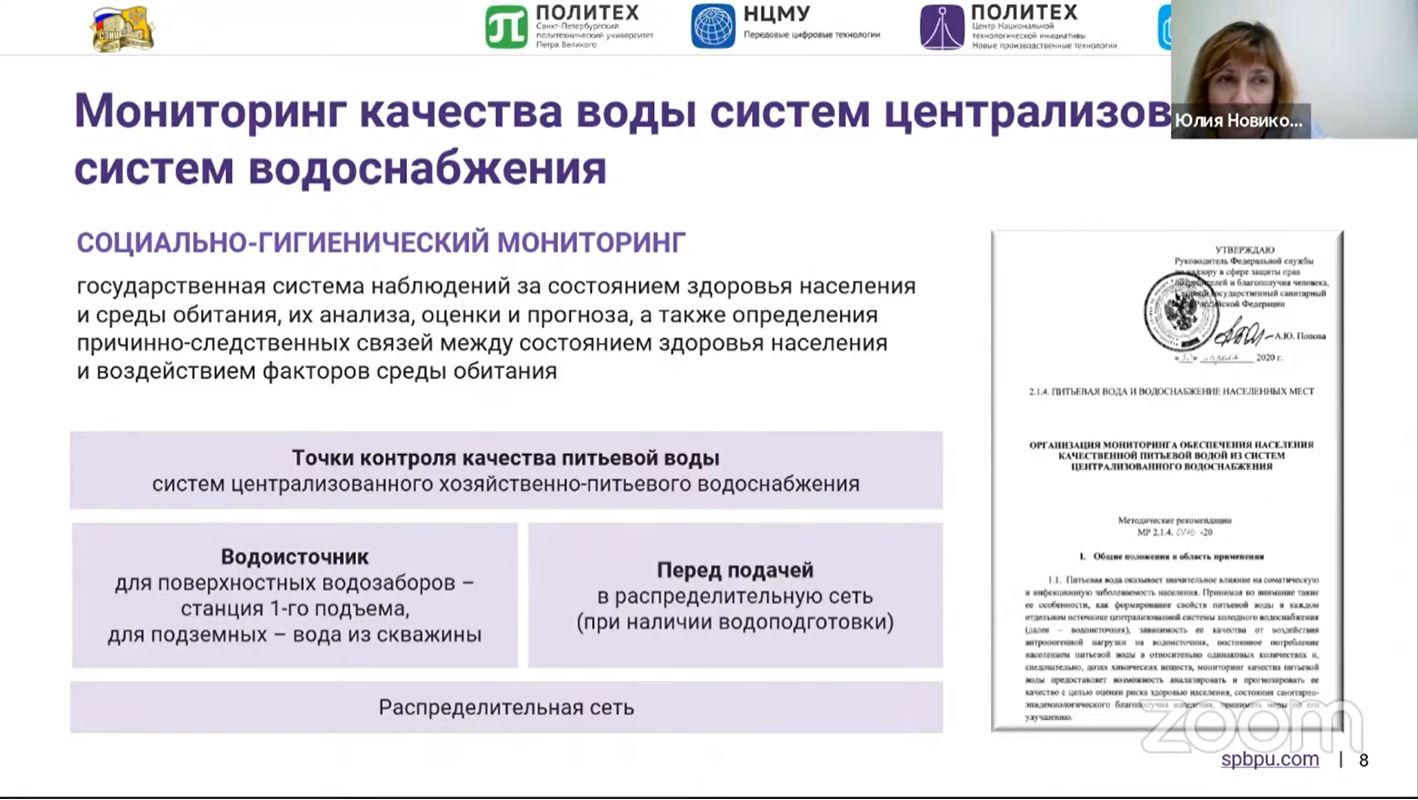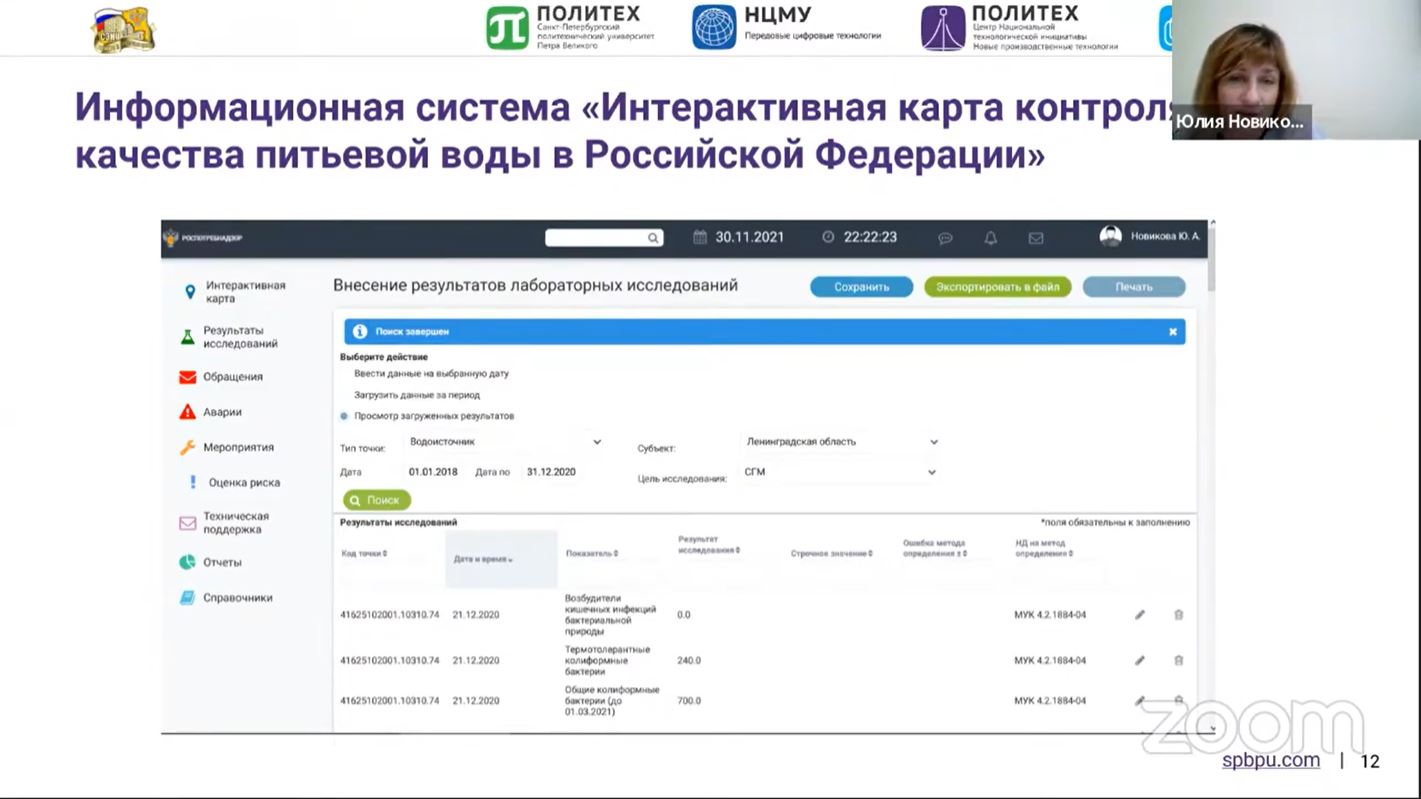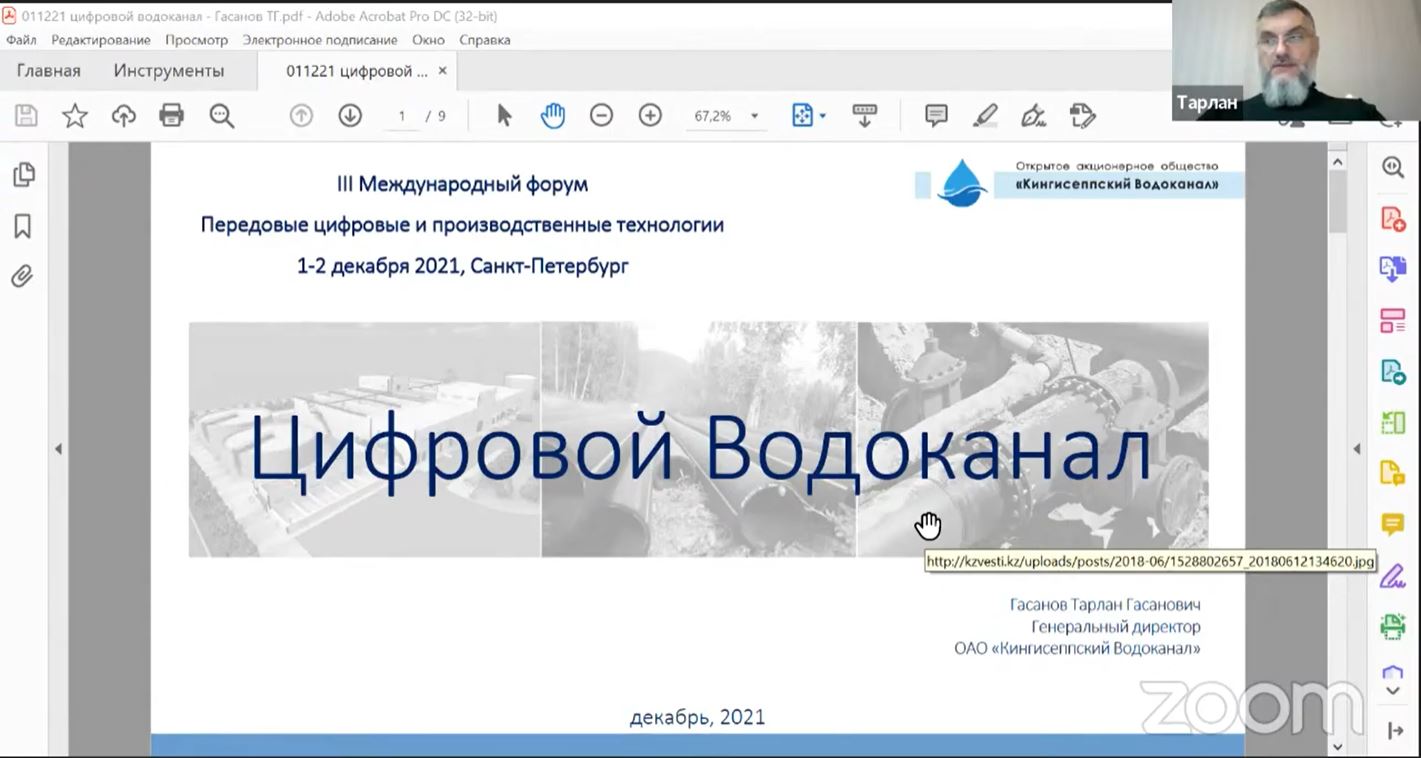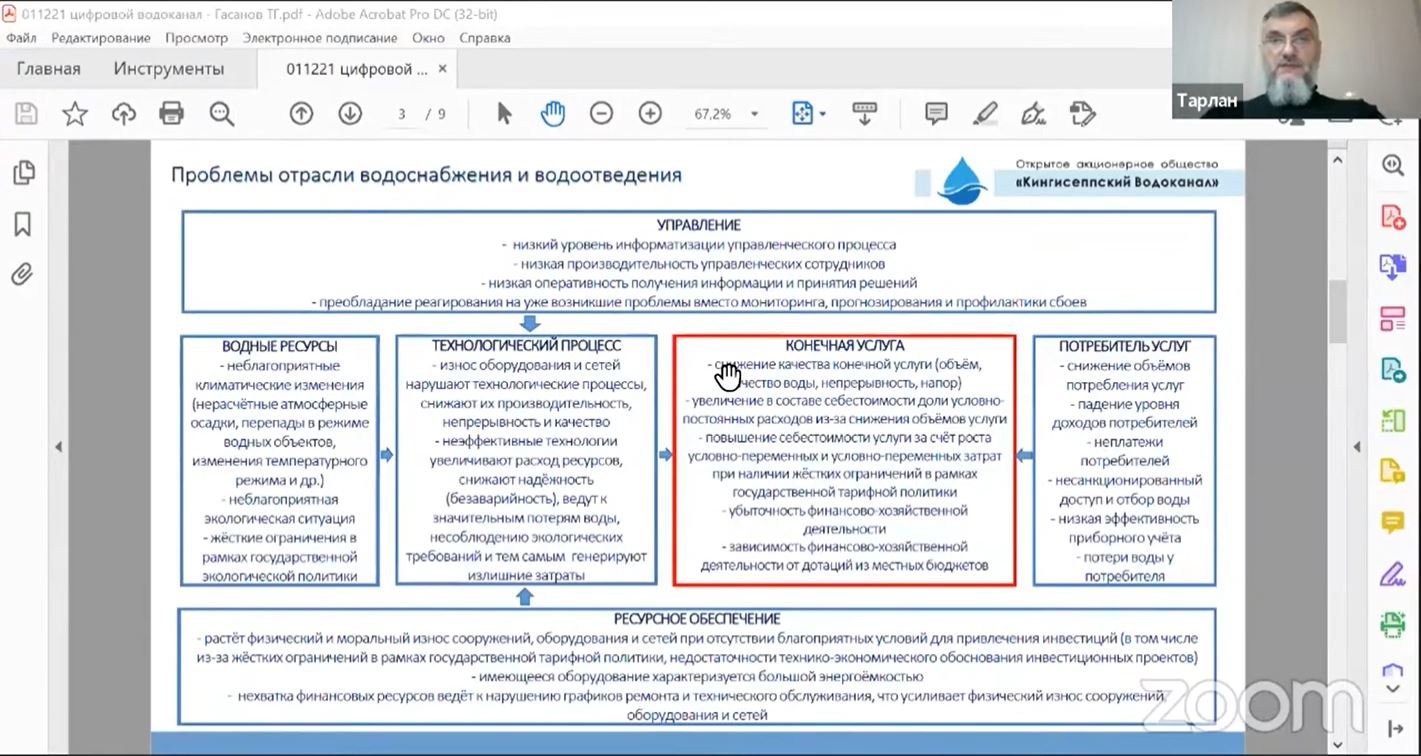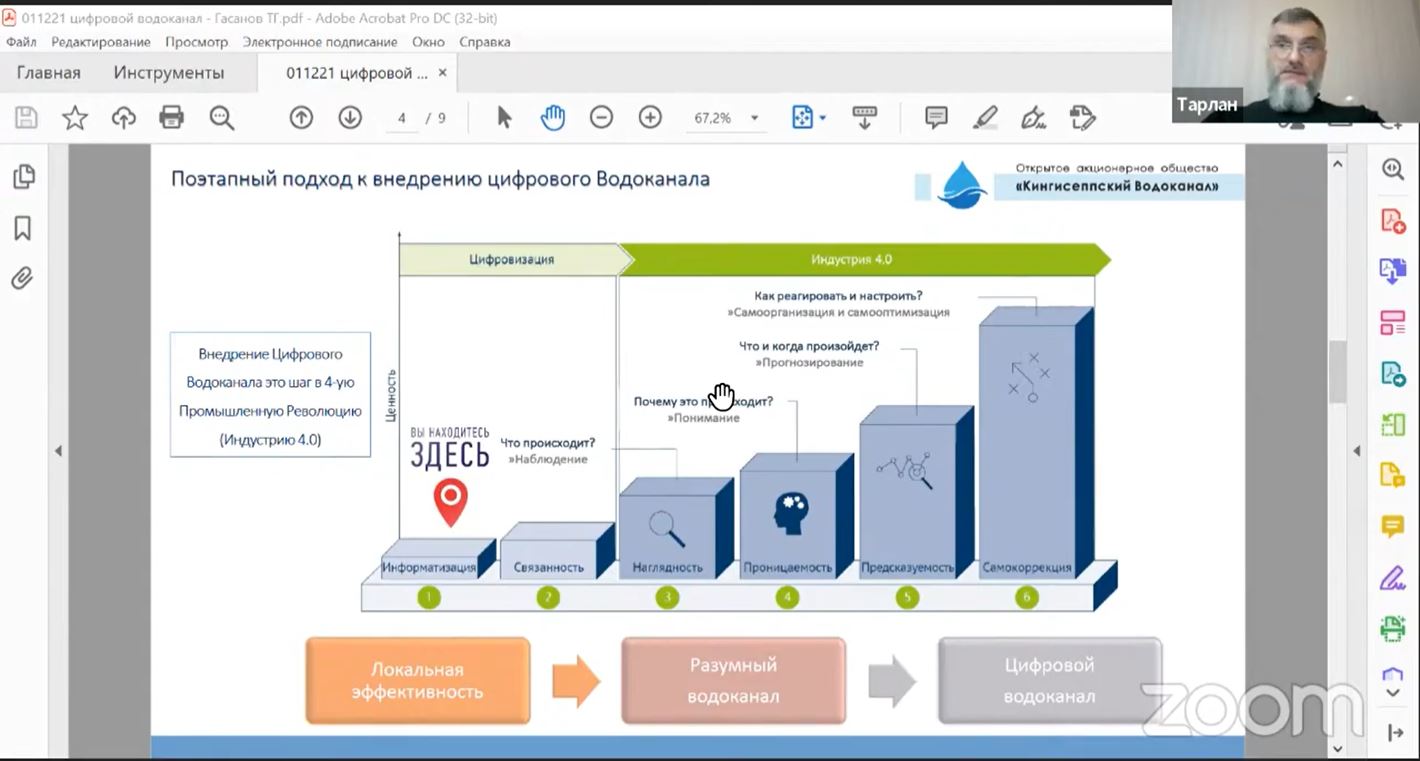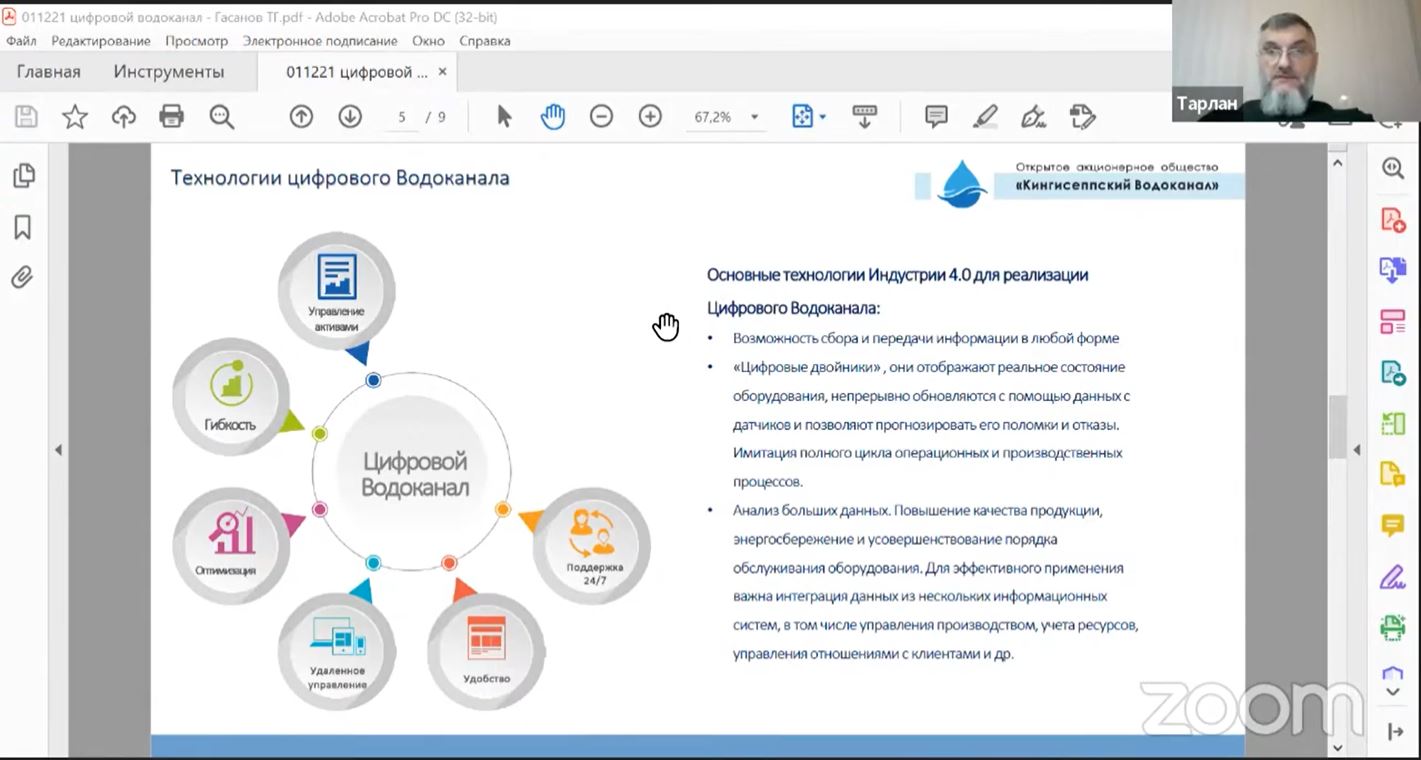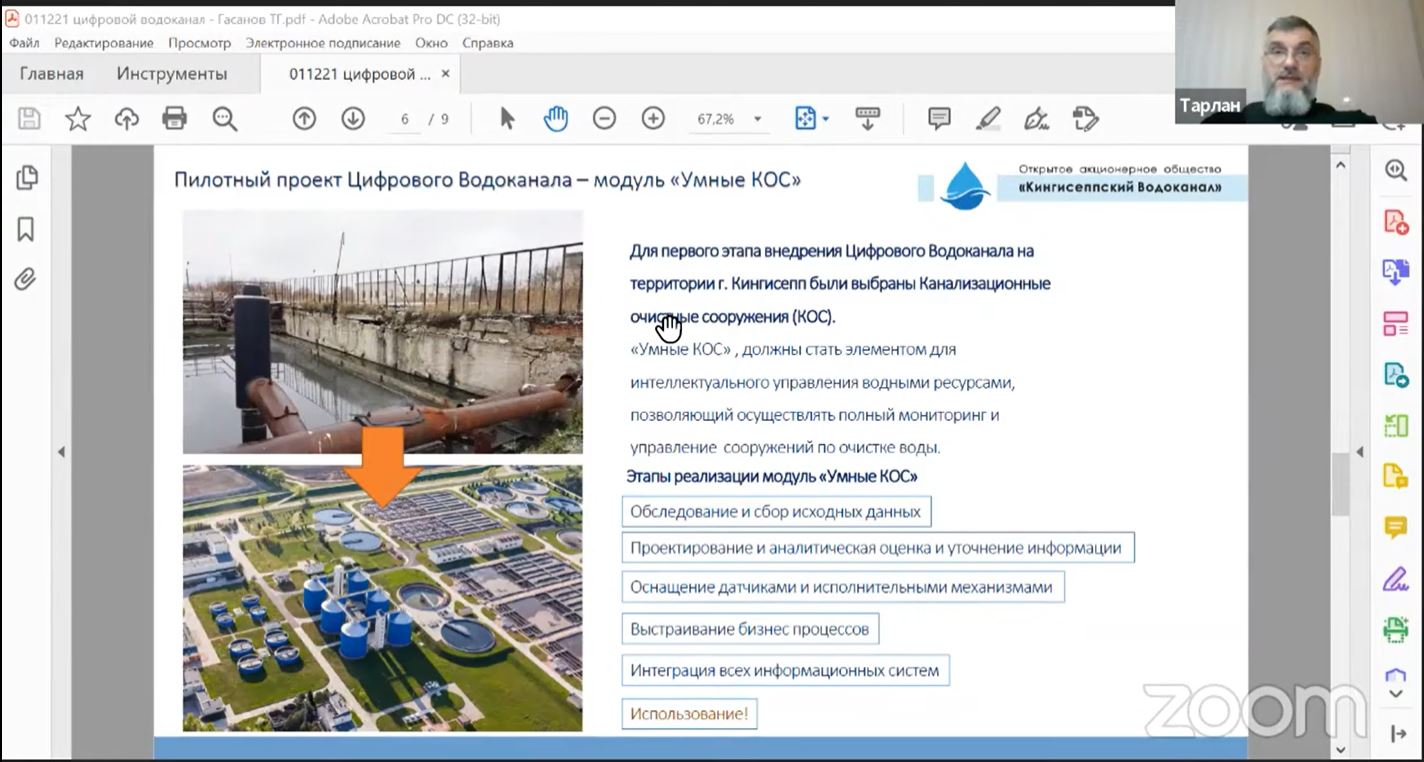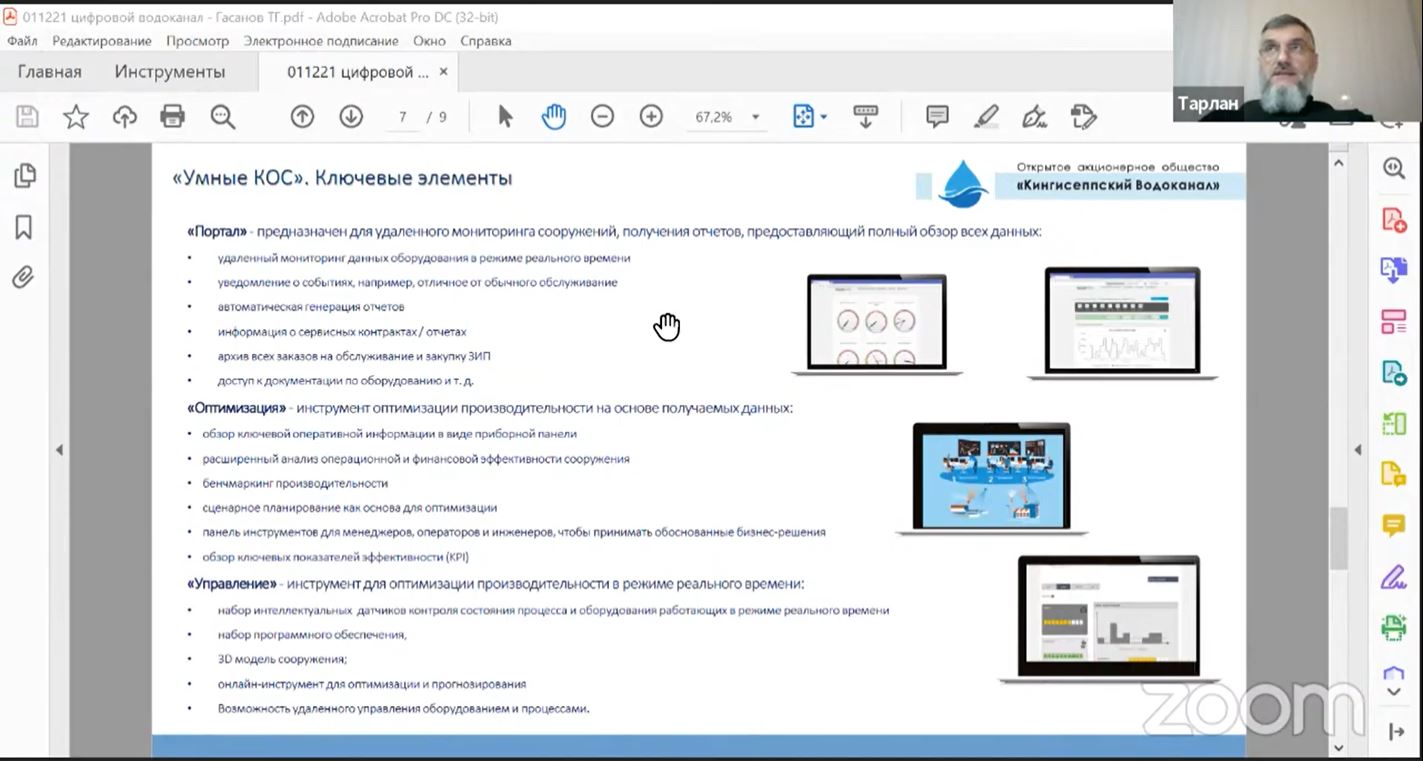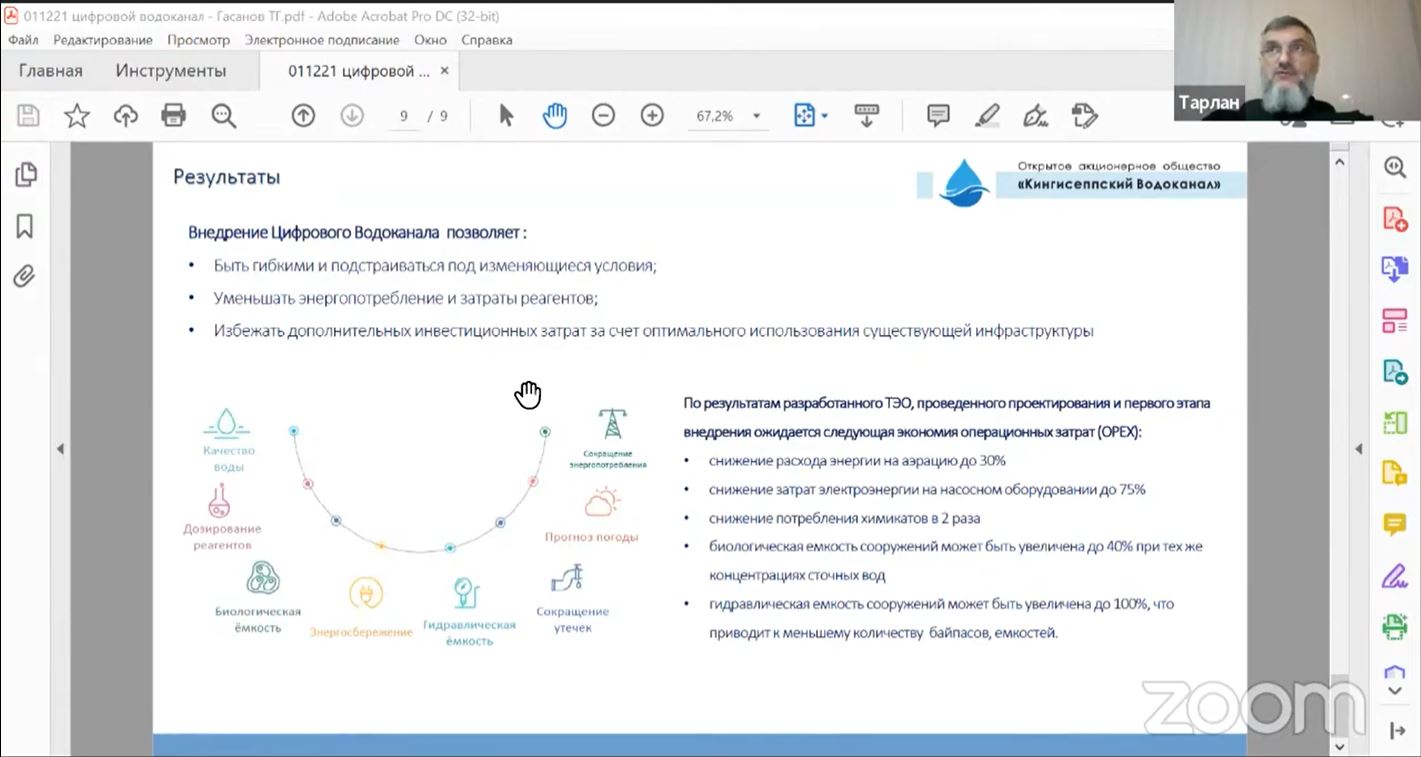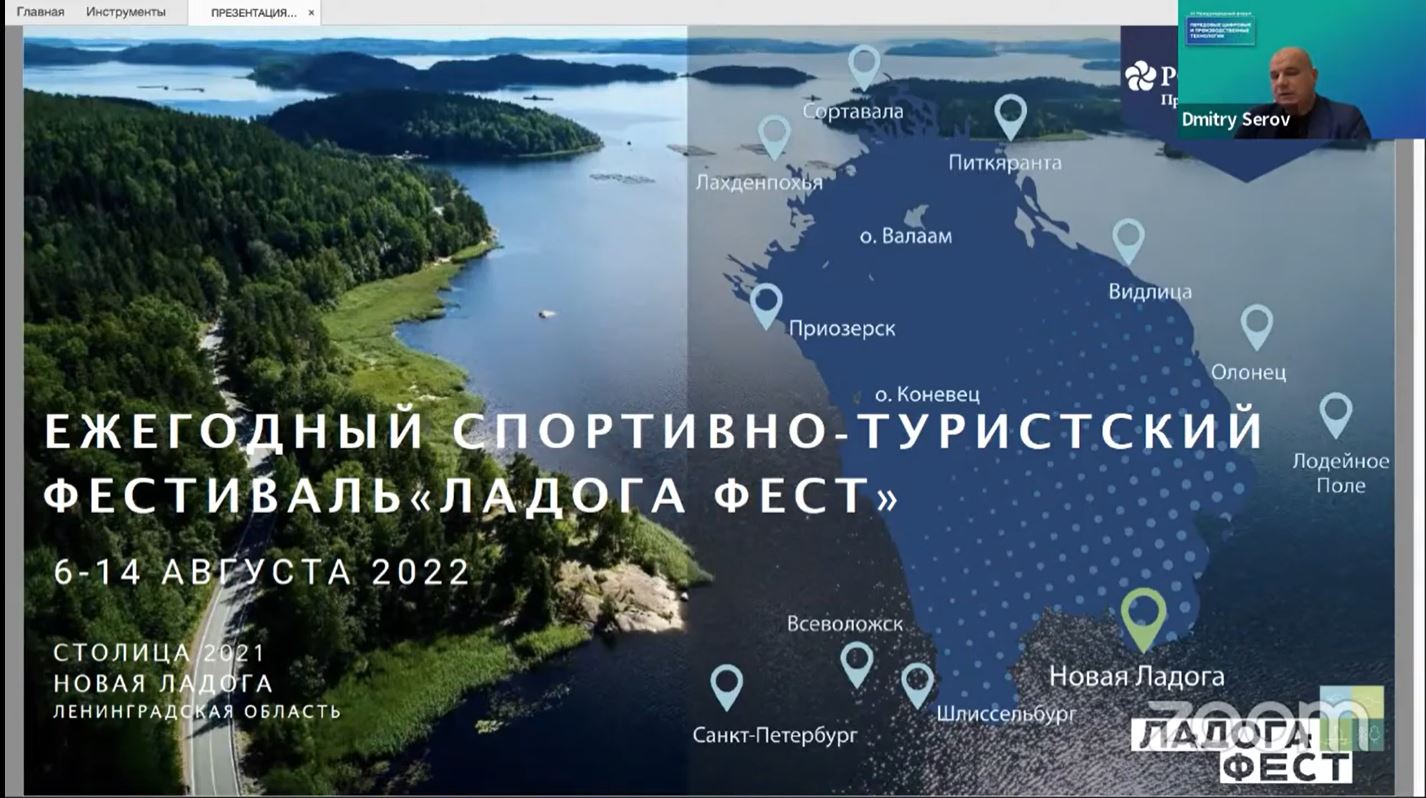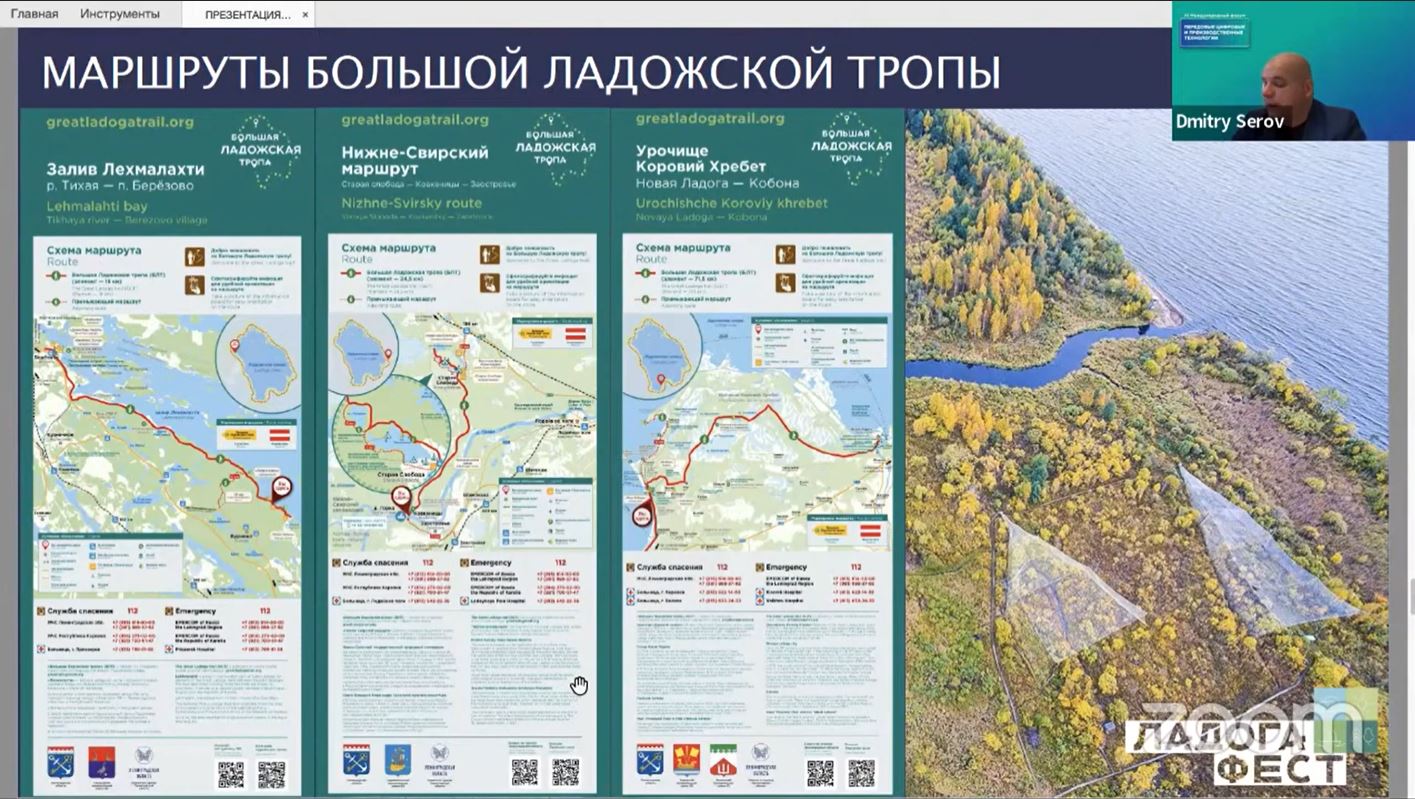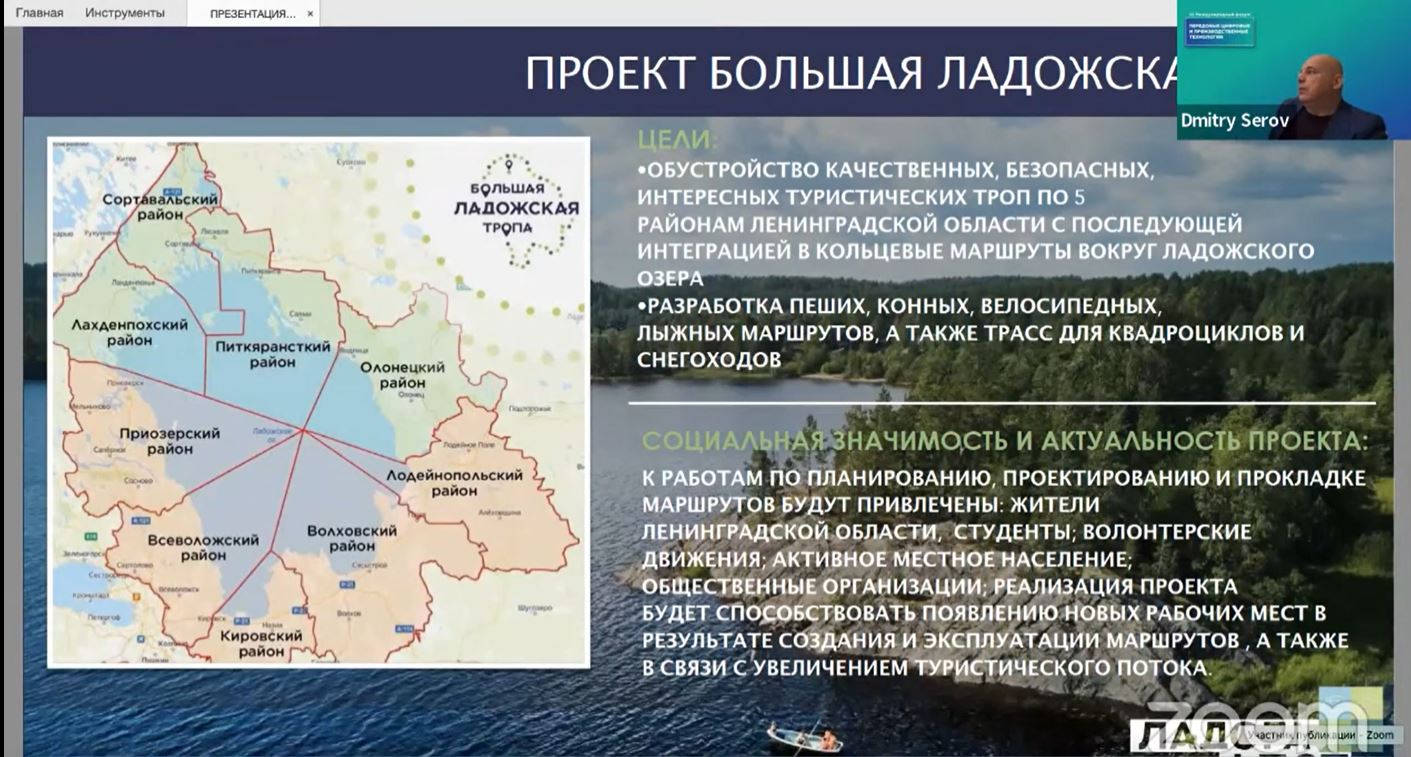Third International Forum “Advanced Digital and Manufacturing Technologies”: Round-Table Discussion “Digital Transformation of Public Utilities and Natural Resource Management”
On December 1, 2021, as part of the Third International Forum “Advanced Digital and Manufacturing Technologies” business program, a Round-Table Discussion “Digital Transformation of Public Utilities and Natural Resource Management” was held. It was arranged by the Industrial Systems for Streaming Data Processing Laboratory of the SPbPU NTI Center. The Forum was organized by Peter […]
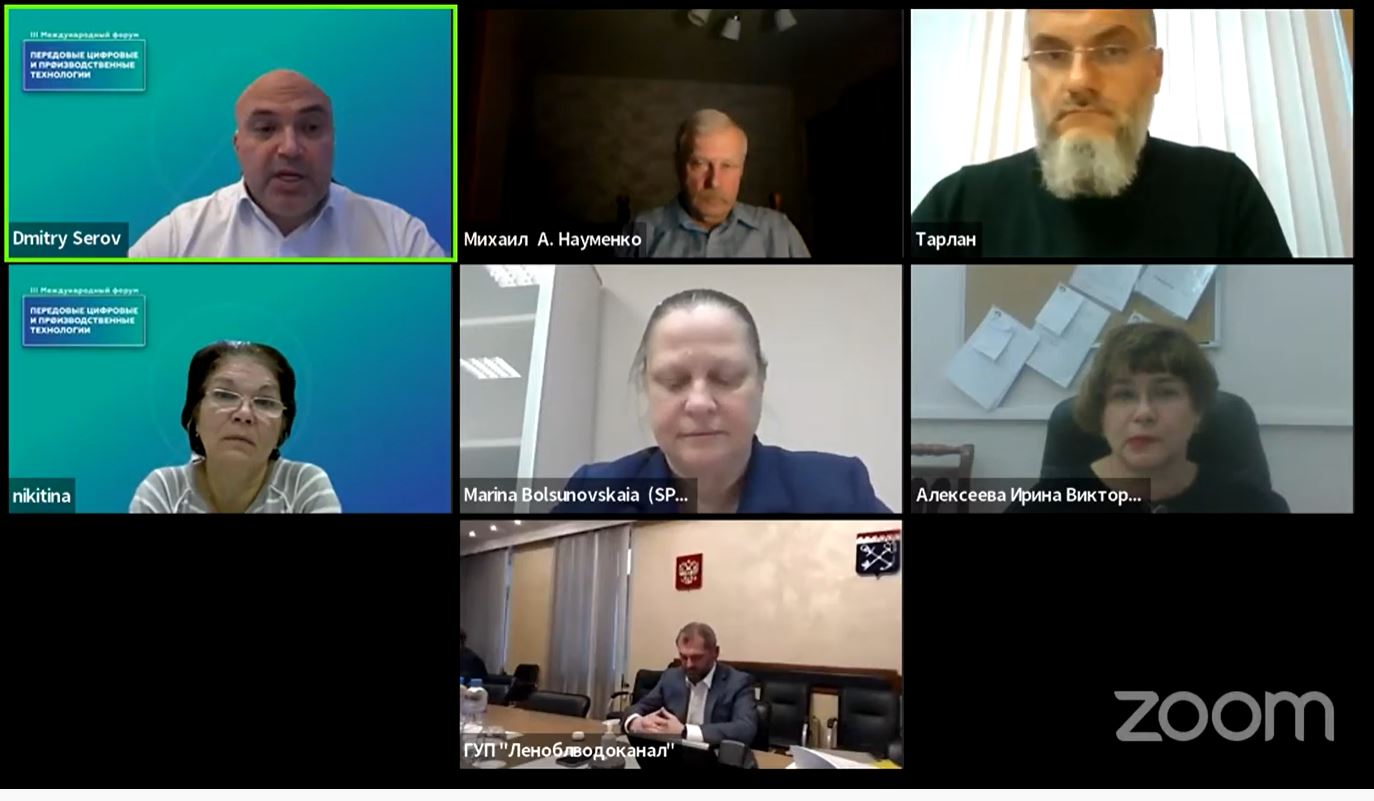
On December 1, 2021, as part of the Third International Forum “Advanced Digital and Manufacturing Technologies” business program, a Round-Table Discussion “Digital Transformation of Public Utilities and Natural Resource Management” was held. It was arranged by the Industrial Systems for Streaming Data Processing Laboratory of the SPbPU NTI Center.
The Forum was organized by Peter the Great St. Petersburg Polytechnic University (SPbPU) and its structural divisions, which are the World-Class Research Center for Advanced Digital Technologies of SPbPU (SPbPU WCRC) and the National Technology Initiative for Advanced Manufacturing Technologies of SPbPU (SPbPU NTI Center). The Forum was included in the Year of Science and Technology event program and supported by the Ministry of Science and Higher Education of the Russian Federation within the “Science and Universities” national project.
During the Round-Table Discussion “Digital Transformation of Public Utilities and Natural Resource Management”, the possibilities of digital twins and big data technology in solving the problems of integrated water resources management within the Neva-Ladoga River basin were considered.
The Round-Table Discussion moderator was Dmitry A. Serov, Researcher at the Industrial Systems for Streaming Data Processing Laboratory of the SPbPU NTI Center, an expert in digital technologies and water supply and sanitation management.
ROUND-TABLE DISCUSSION PARTICIPANTS
- Mikhail A. Naumenko, Doctor of Geographical Sciences, Professor, Head of the Hydrology Laboratory of the Institute of Limnology RAS, fellow of the Russian Geographical Society;
- Anna B. Kuznetsova, “Baltvodkhoz” of the Federal State Budgetary Water Agency “Tsentrregionvodkhoz” Branch Director;
- Yulia A. Novikova, Acting Head of the Department of Habitat and Public Health Research in the Arctic Zone of the Russian Federation of the North-West Public Health Research Center of Rospotrebnadzor;
- Nikolay V. Shafransky , Deputy Director for IT of Alliance Electro LLC;
- Dmitry A. Serov, Researcher at the Industrial Systems for Streaming Data Processing Laboratory of the SPbPU NTI Center;
- Tarlan G. Gasanov, General Director of Kingisepp Vodokanal PLC;
- Vsevolod V. Shevelev, Director of the Ladoga Fest, Project Manager of the Roscongress Foundation.
The experts representing the scientific community, public authorities, organizations of the housing and utilities sector, and various industries related to environmental resource management also attended the Discussion. They were Shamil R. Pozdnyakov, Doctor of Geographical Sciences, Director of the Institute of Limnology RAS; Marina M. Melnik, Head of the St. Petersburg branch of the Russian Federal Research Institute Of Fisheries and Oceanography (VNIRO) (GosNIORKH named after L.S. Berg); Marina V. Kazmina, Acting Head of the Neva-Ladoga Basin Department of the Federal Agency for Water Resources; Irina V. Alekseeva, Director of the Environmental Protection Department of the SUE “Vodokanal of St. Petersburg” Directorate of Nature Management; Sergey S. Morozov, Director General of the SUE “Vodokanal of the Leningrad Region”; Alexander V. Khristenko, Head of the North-Western Territorial Administration of the Federal Agency for Fishery; Alexander A. Kovshov, Vladimir N. Fedorov, Nadezhda A. Tikhonova, research staff of the Analysis, Assessment, and Forecasting Division of the Department of Habitat and Public Health Research in the Arctic Zone of the Russian Federation of the North-West Public Health Research Center of Rospotrebnadzor (NWRC); Igor O. Myasnikov, Candidate of Medical Sciences, Head of the Department of Hygiene of Drinking Water Supply of the NWRC.
“Big data and digital twin technologies are among the most popular and promising these days. Although the application of such technologies in environmental resource management already has its own history in our country and abroad, the possibilities for further work and the potential for comprehensive improvement of the housing and utilities sector and environmental resource management with the help of digitalization tools are huge. What is more pleasant, today’s discussion is taking place with the participation of the Northwestern District, especially the Leningrad region, representatives. The Northwestern District of Russia currently is the economic development flagship. Effective environmental management is crucial for it, especially considering the investment projects currently underway in our region”, said Dmitry A. Serov in his opening speech and expressed his hope that this discussion would start the implementation of new research and developments in digitalization of housing and environmental resources management in the Northwestern District.
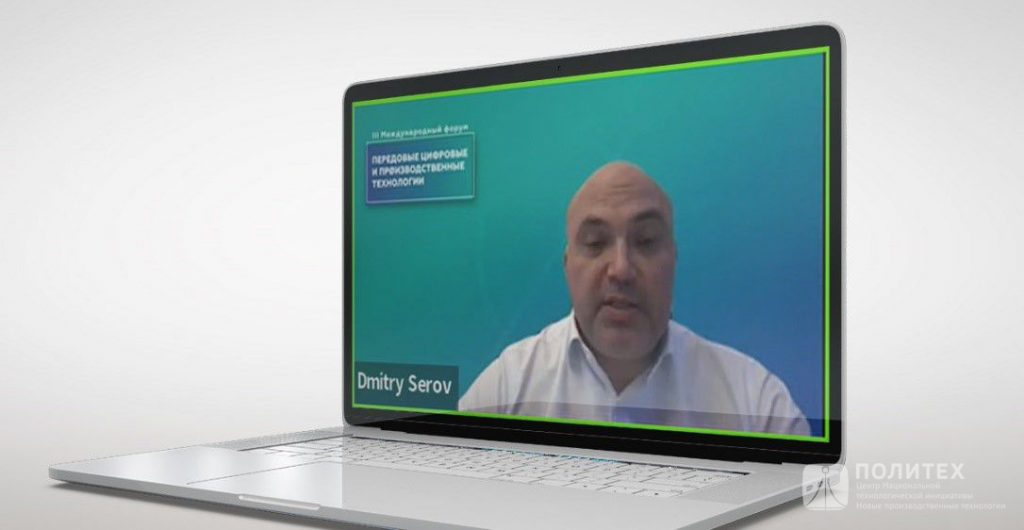
In the report “Digital bathymetric model of Lake Ladoga. The history of creation, current state, and application results for limnological research”, Mikhail A. Naumenko provided the results of work on the first digital model of Lake Ladoga in Russia development, which began about 30 years ago.
An accurate quantitative description of a large lake morphometric characteristics, the shape of its basin, and the depths distribution are of paramount importance for studying the thermal and light regime, wave processes, processes responsible for the soil-forming material redistribution and accumulation in various areas. The distribution of river waters in the lake, especially their dynamics in the bottom layers, largely depends on the bottom topography. The shape and size of the lake basin depend on the waters freeze-up and the ice breakup in certain areas, as well as the dates of various hydrological seasons’ onset and duration.
According to Mikhail Naumenko, the digital models development is now the prospective method for studying the morphometry of large lakes, and mathematical modeling is one of the crucial tools for scientific analysis and complex systems synthesis, including the topography of Lake Ladoga.
The report of Anna B. Kuznetsova considered the problem of high anthropogenic impact in the Luga River basin: “The problems of water delivery to an increasing population, industrial enterprises operating and under construction, and environmental control are very acute. The growth performance of industrial facilities in the region will continue, and this fact makes us wonder of providing all potential water users with water resources while not causing significant damage to this water body.“
To solve the emerging problem, it is proposed to thoroughly monitor the water body state based on digital technologies in order to identify the main factors affecting water bodies and explore the Luga River basin “from source to sea” throughout the whole stream system. The results of this work will allow the rational use of the water body, saving water in time and avoiding water scarcity.
It is necessary to design a network of points for monitoring the hydrological situation on the basis of existing stream gauges and to establish new points to ensure effective monitoring throughout the basin. A network of independent sensors (hydrological situation monitoring points) will be used to promptly collect information about the current state of water. Data from the devices will be collected in a single processing center for automatic analysis of the ecological state.
Yulia A. Novikova in her report presented the information system “Interactive map of drinking water quality control in the Russian Federation“, which has been developed by Rospotrebnadzor since 2019.
The unified digital platform for acquiring, systematizing, and analyzing the results of laboratory studies of drinking water quality is designed to increase the effectiveness of federal state sanitary control of drinking water supply to the population, introduce supervision over the implementation of the “Clean Water” federal project targets, and inform the population about the quality of drinking water, as well as promptly analyze large amounts of data and facilitate informed management decisions.
The system development is approaching completion, a database of the water monitoring and population morbidity results has been compiled; the data acquired within the information system, taking into account the monthly update of laboratory results, is analyzed using mathematical and statistical processing methods.
Yulia Novikova named the development of the information system analytical as one of the following steps. It will allow the territorial bodies of Rospotrebnadzor specialists to faster conduct comparative and corrective analyses of water quality and the population morbidity level, including those in the Neva-Ladoga water basin.
“The current system of drinking water quality control and assessment in the Russian Federation is essentially fragmented; social and hygienic monitoring, in-process monitoring, and control and supervisory (verification) activities are inconsistent. It is essential to integrate the drinking water quality data, which would improve the accuracy of assessing the drinking water quality and, as a result, take appropriate steps to improve its quality,” believes Yulia Novikova.
Another digital solution for environmental monitoring presented Nikolai V. Shafransky in his report “Water and air resources continuous monitoring establishment based on AIS “Precipitation”. The system is designed by Alliance Electro LLC in close cooperation with the SUE “Vodokanal of St. Petersburg”, the Federal Service for Hydrometeorology and Environmental Monitoring (Rosgidromet), and the Voeikov Main Geophysical Observatory specialists.
AIS “Precipitation” targets:
- The city meteorological conditions real-time monitoring and issuing warnings about the adverse meteorological events occurrence.
- Improving the accuracy of determining the actual amount of precipitation by drainage basins.
- Systematic automated accounting of precipitation and weather conditions with the multi-year database development.
- Automation and improving the accuracy and efficiency of reporting on the precipitation and temperature characteristics.
- Forecasting the meteorological conditions further development in the serviced area.
- Determination of the volume and cost of precipitation disposal for legal entities.
The system was implemented in St. Petersburg in 2015. It includes 34 automatic Precipitation gauges and 7 weather stations, which are combined into observation points. Data is transmitted at a 5 minutes frequency. The system is constantly evolving and improving.
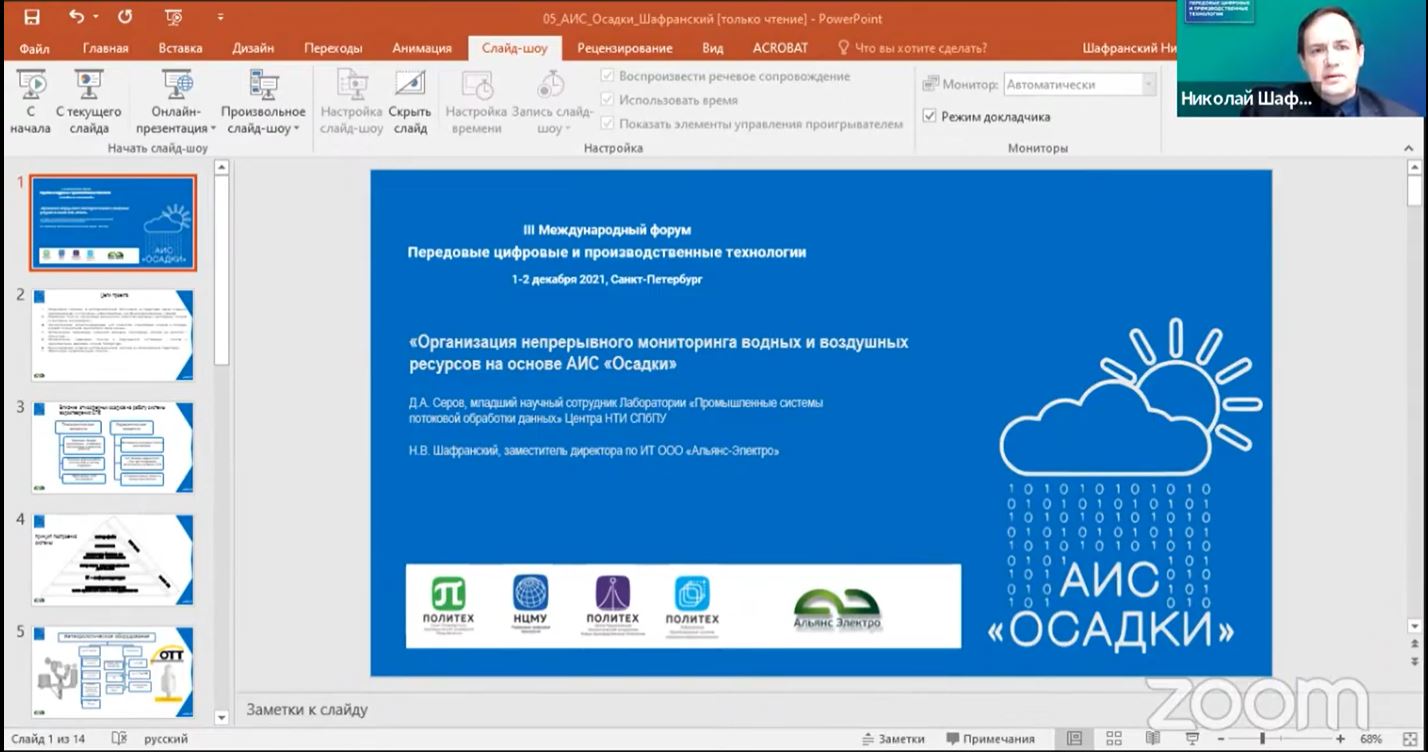
Tarlan H. Hasanov in his report “Digital Water Utility” spoke about the digital methods introduction in the of water treatment process in Kingisepp Vodokanal PLC. For the first stage of the concept implementation in Kingisepp, sewage treatment facilities (STF), where, in cooperation with the John Nurminen Foundation, equipment was supplied for automated reagent dosing to remove phosphorus compounds from wastewater, were selected. The key points of the Smart STF module (which includes the Reagent Dosing tool) are:
- “Portal” — a module for remote structures monitoring and receiving reports, providing a complete overview of all data;
- “Optimization” — a performance optimization tool based on the received data;
- “Management” — a tool for optimizing performance in real time.
Among the factors that could slow down the water utilities development and the Digital Water Utility concept implementation, the speaker emphasized the duration of its implementation period (about 5-10 years), the need for serious financing (investors participation), and the lack of consumer confidence (both individuals and legal entities), which manifests itself in the unwillingness to install appropriate metering devices.
At the end of the Round Table Discussion, Vsevolod V. Shevelev told about the Ladoga Fest annual sports and tourism festival. Moreover, he is the director of the festival. The event has been held for 5 years, and throughout its existence, it has seriously expanded and transformed from a sports and tourist to a socio-ecological one. One of the main objectives of the festival was to stop the Ladoga waters degradation, and its coverage area expanded to the Lake Ladoga catchment area. Within the cooperation with the Institute of Limnology RAS, the festival organisers launched the “Big Alloy” volunteer environmental project, aimed at annual monitoring of 45,000 kilometers of rivers in the Lake Ladoga catchment area. In the children and youth segment, work is underway to connect children from secondary schools in the catchment area to work with water quality monitoring stations.
Thus, athletes and children could take part in the database formation to develop a unified information model of the region. “I see a good chance of the scientific community, the higher and secondary education system, and the project cooperation, so that the tasks could be solved,” Vsevolod Shevelev said.
Once all the presentations were made, the Round Table Discussion participants considered the relevance and prospects of creating the Neva-Ladoga basin digital twin. The experts draw their attention to the issues of a database formation, the emergence of possible problems in the interaction of various scientific and government organizations as sources of unique data for the model. How to make the data transfer process legitimate? How to choose an organization to store a data set? Who would be responsible for their security and at the same time accessibility for users?
The discussion participants acknowledged the urgency of providing regulatory, methodological, and legal support for the basin digital twin creation.
“If we have data that others need, where can we “put it” so that it is available to the largest circle of interested parties?” noted Mikhail A. Naumenko. “This is a slow and difficult process, including in terms of legislation. This problem should be raised, but first assess the amount and availability of data, their format and whether each of us is ready to post this data on any resource for other users. Therefore, we must first discuss the methodology, and then decide on the model. For now, we need to collect data in the same format, and then use them.”
At the end of the Round Table Discussion, Dmitry A. Serov made a proposal to address the Leningrad Region government with a letter proving the feasibility of developing the Neva-Ladoga basin digital twin, forming a working group, and signing cooperation agreements between scientific and government institutions.


